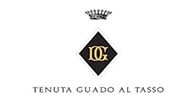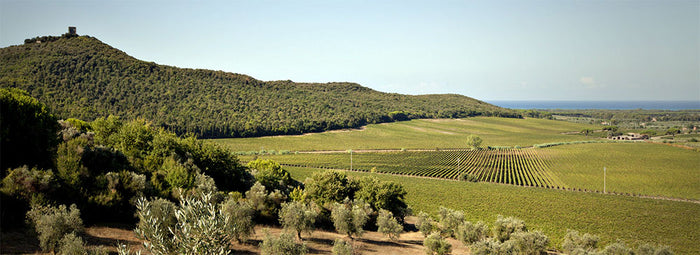Description
A blend of Cabernet Sauvignon, Merlot, Cabernet Franc and occasionally a small amount of Petit Verdot to best represent the complexity and elegance of the Bolgheri terroir. This wine has been produced since 1990 from vineyards on alluvial soils whose composition ranges from clay-sand to clay-loam with rocky deposits know as “scheletro”.
Awards

Perfume

Color

Taste
Serve at:
16 - 18 °C.
Longevity:
15 - 25 years
Decanting time:
1 hour

- Start up year: 1934
- Oenologist: Marco Ferrarese
- Bottles produced: 1.565.000
- Hectares: 320
Bolgheri, a prestigious, small DOC in which Guado al Tasso is located, has been famous for rosé wines since the 1970s: for these, as well as for white wines, it received Denominazione di Origine Controllata status in 1984, later extended to reds in 1994. However, the area is now known and respected mainly for its exceptional reds, the so-called 'Super Tuscans'. Read more


| Name | Guado al Tasso Bolgheri Superiore 2021 |
|---|---|
| Type | Red still |
| Denomination | Bolgheri DOC |
| Vintage | 2021 |
| Size | 0,75 l |
| Alcohol content | 14.5% by volume |
| Grape varieties | Cabernet Franc, Cabernet Sauvignon, Merlot |
| Country | Italy |
| Region | Tuscany |
| Vendor | Tenuta Guado al Tasso (Antinori) |
| Origin | Bolgheri (LI) |
| Soil composition | Alluvial soils whose composition ranges from clay-sand to clay-loam with rocky deposits know as “scheletro”. |
| Fermentation | 15-22 days. |
| Wine making | The grapes, upon their delivery to the cellars, were selected in two different phases: first upon their arrival and then during the destemming in order to guarantee that only the finest part of the crop went into the fermentation tanks. As in every vintage, the individual vineyard plots were sub-divided into a series of single plots to be picked on the basis of the climate of the vintage and the characteristics of the grapes, fermenting them then separately. The grapes were then fermented for a period of 15-22 days in stainless steel tanks. |
| Aging | After being run off its skins, the wine went directly into small oak barrels where, by the end of the year, the malolactic fermentation was completed. In the month of February the wine of the finest plots was selected and blended together. It then went back into new French oak barrels where it aged . |
| Allergens | Contains sulphites |








